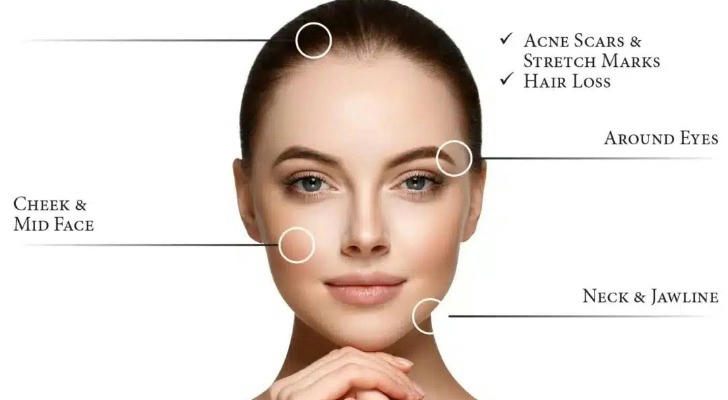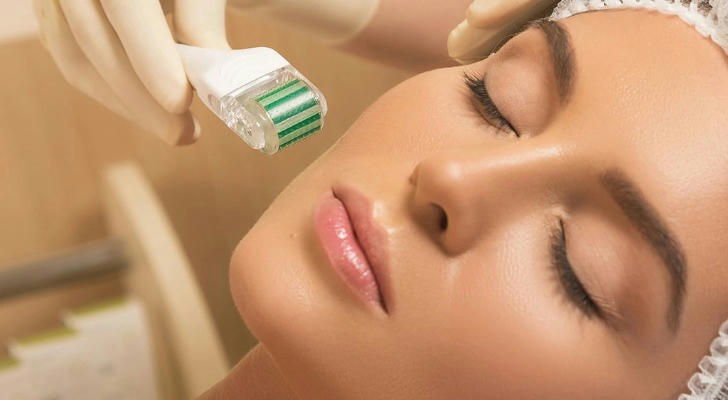Microneedling: The Tiny Needles Behind Radiant Skin
Microneedling, once a niche procedure known only to dermatologists, has now become a go-to treatment for people seeking smoother, firmer, and more youthful skin—without surgery or heavy downtime. This minimally invasive therapy harnesses the body’s natural healing power to renew the skin from the inside out.
From reducing acne scars to minimizing fine lines and improving skin texture, microneedling is gaining popularity among skincare enthusiasts, celebrities, and medical professionals alike. But how exactly does it work, and is it right for you? Let’s explore the science, benefits, and real-life impact of microneedling.

What Is Microneedling?
Microneedling—also known as collagen induction therapy—involves using a device with fine, sterile needles to create thousands of micro-punctures on the surface of the skin. These tiny injuries trigger the body’s natural wound healing response, stimulating the production of collagen and elastin, two essential proteins responsible for skin strength and elasticity.
Microneedling can be done manually using a derma roller or with a motorized pen-like device, which provides more consistent and deeper penetration. It is typically performed by licensed medical aestheticians or dermatologists and can be customized for various skin concerns.
What Can Microneedling Treat?
Microneedling is celebrated for its versatility. It can address a wide range of skin concerns, including:
- Acne scars and post-inflammatory pigmentation
- Enlarged pores
- Fine lines and early wrinkles
- Uneven skin tone and rough texture
- Stretch marks (on body areas like thighs, abdomen, arms)
- Mild skin laxity
- Sun damage and discoloration
For more advanced treatment, microneedling can be combined with platelet-rich plasma (PRP), known as the "vampire facial," or paired with topical serums that better penetrate the skin post-treatment.
How Does Microneedling Work? 🔬
When the skin is pricked by the microneedles, it enters a regeneration cycle:
- Inflammation: The immune system increases blood flow and begins the healing process.
- Proliferation: New cells and blood vessels form, while fibroblasts produce more collagen.
- Remodeling: The skin becomes firmer, smoother, and more even over time.
Results often begin to appear within 2 to 4 weeks after the first session, with continued improvement over the following months. For optimal results, most people undergo 3–6 sessions, spaced about 4 weeks apart.
Real-Life Story: Michael’s Journey From Acne Scars to Clearer Skin
Michael, a 28-year-old graphic designer from Seattle, had struggled with moderate acne as a teenager. Though his acne cleared up in his early twenties, the scarring left behind affected his self-confidence, especially during meetings or dates.
After researching non-surgical options, he booked a consultation for microneedling at a local medical spa. His provider recommended a series of five sessions focused on his cheeks and jawline.
Each session lasted about 45 minutes. Michael described the procedure as “uncomfortable but tolerable”—a numbing cream was applied beforehand. He experienced mild redness and peeling for two days after each treatment.
By the fourth session, he noticed a significant reduction in the depth of his acne scars. The texture of his skin became smoother, and he no longer felt the need to use concealer.
“Microneedling didn’t just improve my skin—it gave me the confidence to speak up in meetings, attend interviews, and go out without feeling self-conscious,” Michael shared.

What to Expect: Before and After Care ✅
Before the procedure:
- Avoid retinol, acids, or harsh exfoliants for 3–5 days
- Discontinue blood-thinning supplements (fish oil, aspirin, vitamin E)
- Stay hydrated and arrive with clean skin
After the procedure:
- Expect redness, sensitivity, and possible flaking for 1–3 days
- Avoid direct sun exposure and use broad-spectrum sunscreen
- Skip makeup for at least 24 hours
- Use gentle, hydrating skincare and avoid active ingredients for a few days
Microneedling vs. Other Treatments
| Treatment | Key Benefits | Best For |
|---|---|---|
| Microneedling | Stimulates natural collagen production | Acne scars, fine lines, texture |
| Laser Resurfacing | Deeper correction and precision | Deeper wrinkles, pigmentation |
| Chemical Peels | Exfoliates surface layers | Brightening, light acne scars |
| Botox/Fillers | Muscle relaxation or volume | Expression lines, volume loss |
Microneedling offers a natural approach, with cumulative improvements and fewer risks of hyperpigmentation compared to deeper lasers—especially for people with darker skin tones.
Is Microneedling Right for You?
Microneedling is generally safe for all skin types, including sensitive or darker skin tones. You may be a good candidate if:
- You want smoother skin without aggressive procedures
- You have mild to moderate acne scarring or fine lines
- You’re looking for gradual, natural-looking results
- You have realistic expectations and can commit to multiple sessions
However, microneedling is not recommended for those with active acne, eczema, rosacea, or open wounds.
Choosing the Right Provider
Because microneedling involves breaking the skin barrier, choosing a qualified provider is crucial. Look for:
- Licensed medical professionals with skin anatomy knowledge
- Sterile equipment and FDA-approved devices
- A thorough consultation with personalized treatment planning
Avoid at-home microneedling devices unless advised by a professional, as improper use can lead to infections, scarring, or uneven results.
Conclusion: A Natural Way to Renew Your Skin
Microneedling may use tiny needles, but its impact is anything but small. By tapping into your skin’s self-healing powers, it offers a safe, effective, and non-surgical path to smoother, brighter, and healthier-looking skin.

Whether you’re dealing with acne scars, early signs of aging, or just looking for a way to enhance your skin’s natural glow, microneedling could be the treatment that helps you feel confident in your skin—every day.
